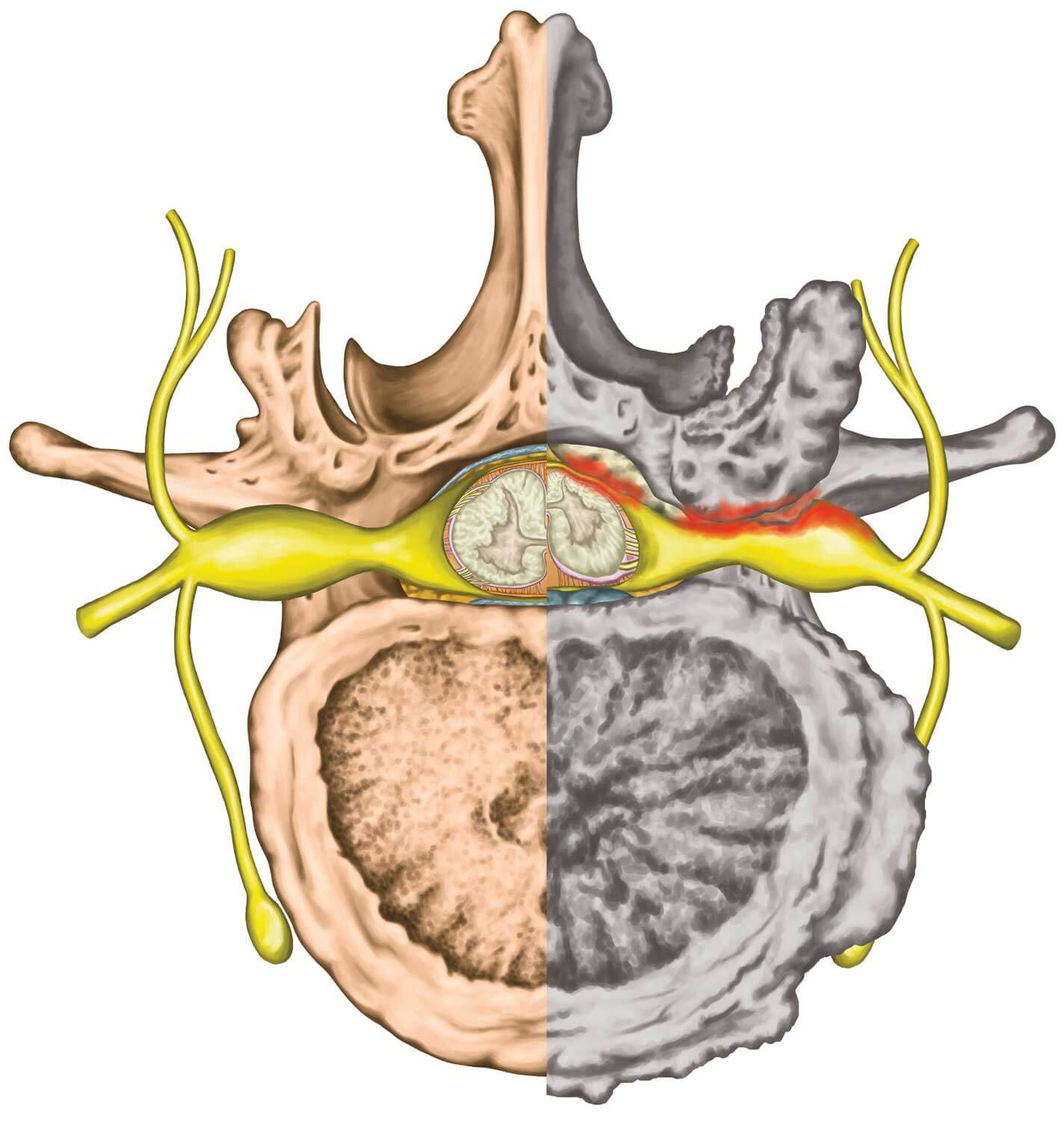Risk Factors for Lumbar Stenosis
The risk factors of getting lumbar stenosis rises when you:
- Are over 50 years old
- Have a genetic disease that affects the development of bone and soft tissue thickening/calcification
- Have trauma, scoliosis, spondylolysis, spondylolisthesis and spinal osteoarthritis
- Have a history of spinal injury or lower back surgery
Lumbar Stenosis Diagnosis
Lumbar Spinal Stenosis can be diagnosed by identifying its symptoms through a physical examination. However, doctors may require imaging tests for confirmation:
- MRI
- CT Scan
- Myelogram (Uses injected dye to detect changes in nerve structures)
- X-rays
Non-Surgical Treatment for Lumbar Stenosis
Depending on the condition's severity, various options to treat lumbar spinal stenosis are available:
- Typically, symptoms of lumbar spinal stenosis can be alleviated by simply improving one's flexibility, balance, strength and endurance through exercise and physiotherapy.
- Some may need to wear supportive devices like a back brace to provide protection and prevent further trauma and strains.
- Maintaining a healthy weight will also relieve pressure from the spine, reducing the chances of spinal stenosis, herniated disks and other sprains and injuries.
- Mild to moderate pain may be eased with over-the-counter painkillers and nonsteroidal anti-inflammatory medicines.
- For more severe cases of spinal stenosis, a higher dosage of medication or opiate is required and prescribed by the doctor. Nerve supplements or nerve stabilizer medications can also help. Corticosteroids and nerve blockers may also be injected to reduce inflammation and pain.
Surgical Treatment for Lumbar Stenosis
Laminectomy or Laminotomy
- A laminectomy is the most common type of surgical treatment for lumbar stenosis. This releases the compression on the spinal nerve, caused by compression of part of the spinal bone called the lamina, as well as the thickened ligament attached to it.
- A laminotomy is the micro-decompression or the partial removal of the lamina in order to remove the part of the bone and thickened ligament that squeezes the nerve root.
Facetectomy or Foraminotomy
- The procedure also removes a part of the spinal structure called the facet, which pinches the nerve root in the spinal canal.
- A foraminotomy is the procedure that expands the passages where the nerves exit the spinal canal. The process results in the widening of the window/channel for the nerve root, giving it more space, and reducing the compressive symptoms.
Interspinous Process Decompression
- This is a minimally invasive surgery that involves an implant inserted between two bony protrusions at the back of the spine called the spinous processes.
- The device keeps the spinal canal open and relieves the compression.
Spinal Fusion
- This procedure aims to stabilize the spine and at the same time decompress the spinal nerves through a combination of the surgical methods of spinal decompression described above.
- It may require screws to complete the construct, and aid the patient recover faster through immediate stability.
Co-Founded by Dr Chua Soo Yong, Atlas Orthopaedic Group is your one-stop Orthopaedic Clinic for the diagnosis and treatment of sports injuries, spinal conditions, and upper and lower limb ailments. Dr Chua is an accredited orthopaedic and spine surgeon specializing in both traditional and minimally invasive procedures in the suboccipital, cervical, thoracic, lumbo-sacral and pelvic regions. To schedule an appointment with Dr. Chua Soo Yong, call 6262-0555 or email drchua@aog.com.sg.
